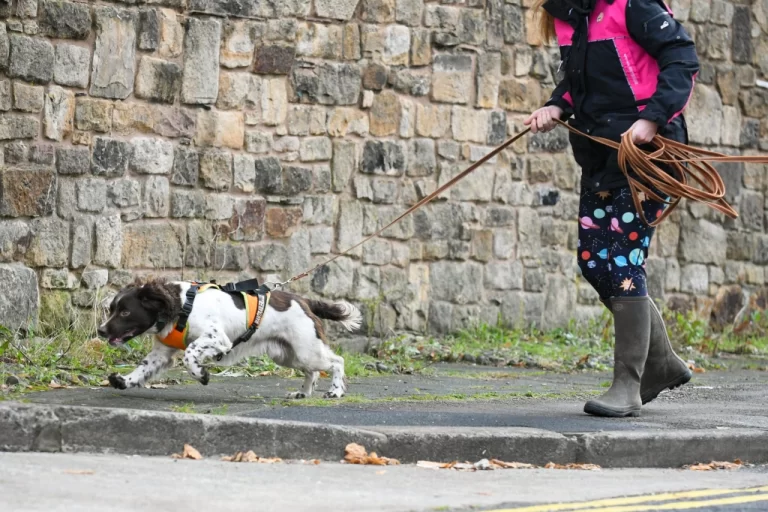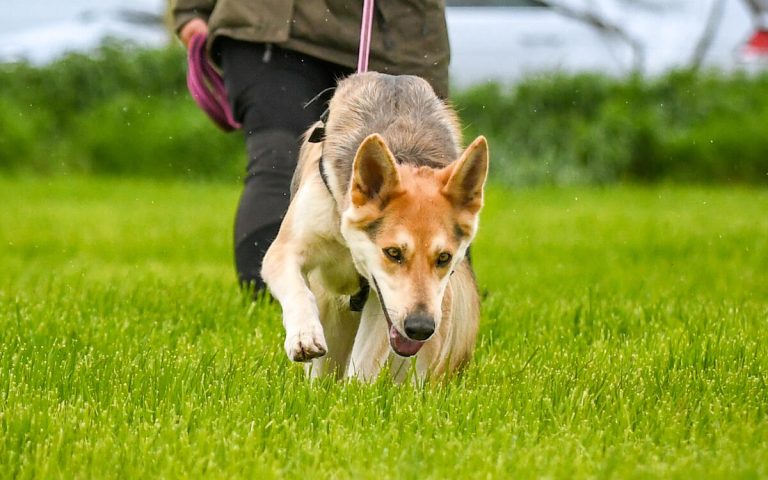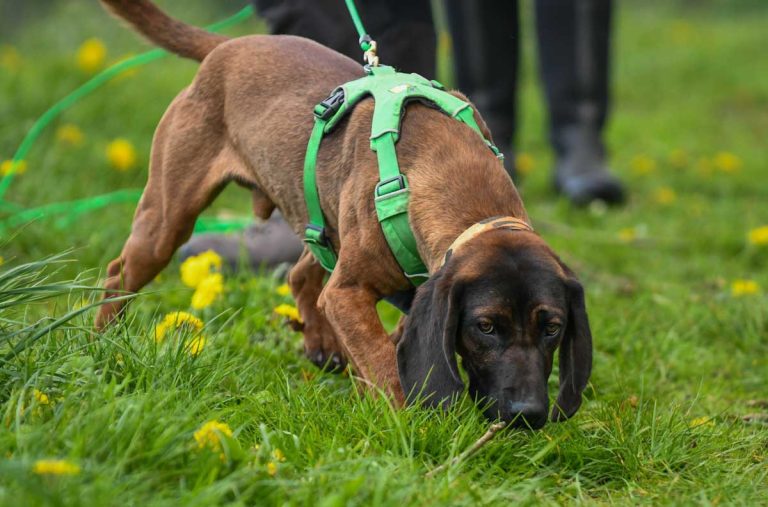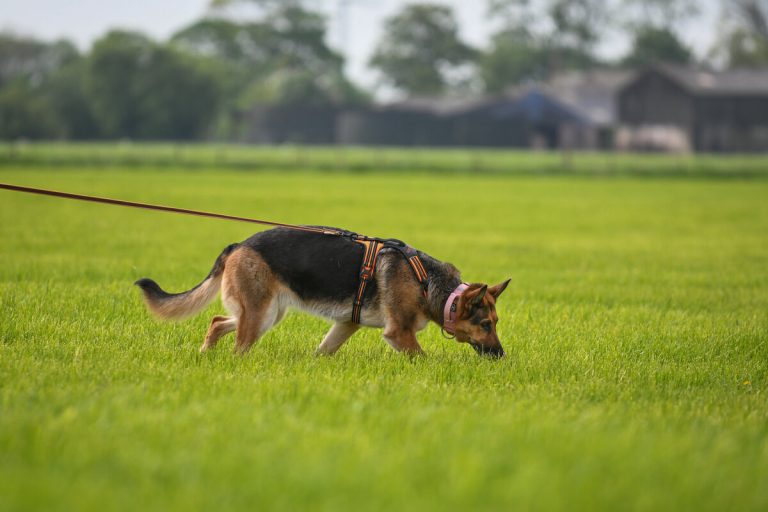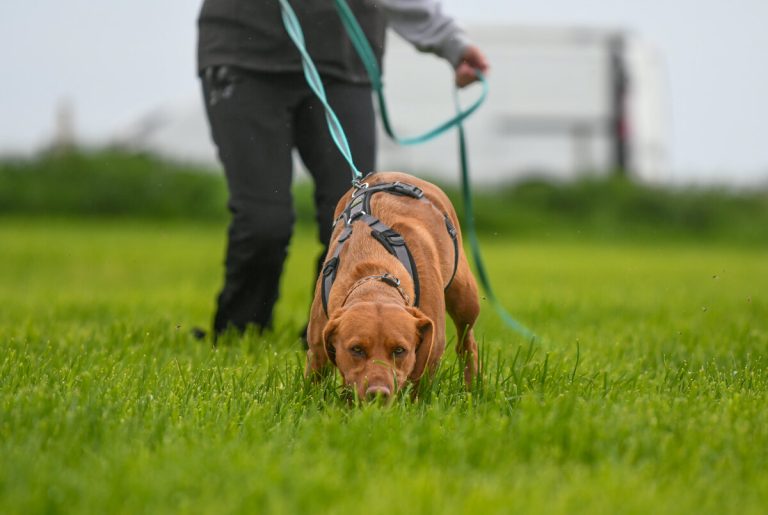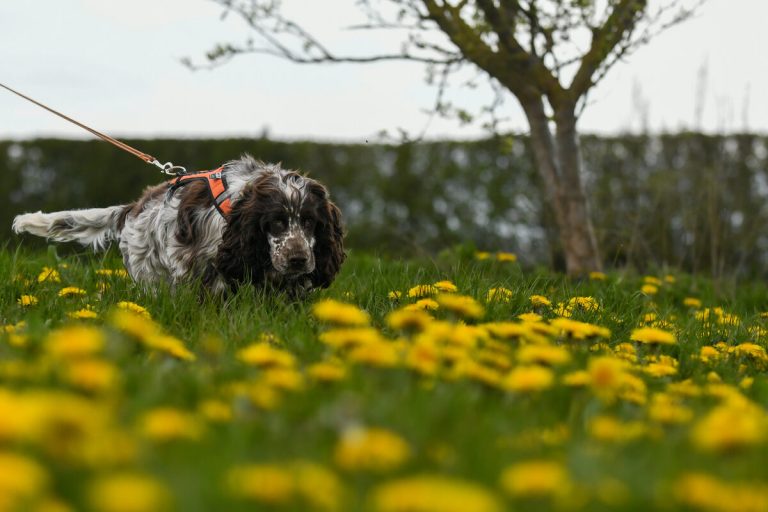How to Read Your Dog’s Behaviour on the Trail While Mantrailing
When you’re out on a mantrailing session, you want to understand exactly what your dog is communicating as they search for the trail layer.
Are they on the scent? Are they off-trail? Do they need help or encouragement?
These questions are at the core of every handler’s journey in mantrailing.
Decoding your dog’s body language can transform your relationship on the trail, improve your teamwork, and lead to more successful trails. It’s what I harp on about on every session and workshop.
In this blog, I’ll walk you through how to understand your dog’s behaviour during mantrailing, helping you both become a more intuitive and effective team.
How Do I Know If My Dog Is Mantrailing?
When your dog is mantrailing, you’ll notice a consistent set of behaviours that signal they’re on the trail. Here’s what to look out for:
- Head Down & Consistent Pull on the Lead: This is often the first sign that your dog is tracking a scent. The lead remains tight, and you can feel the tension shift with their movements. For some breeds this is stronger than others. I am looking at you Spaniel owners.
- Increased Sniffing: A dog actively on the trail will be intently sniffing the ground. Their nose will stay low and close to the surface as they track the scent. They look like the “traditional” dog you would think about when talking about mantrailing.
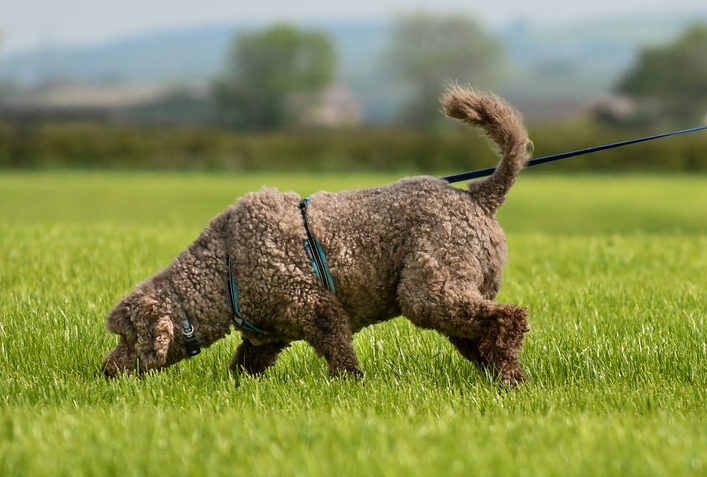
- Head Lifts: If your dog raises their head, it could indicate they’re trying to catch a scent from the air or navigating a change in the trail. You can see this mid trail depending on the wind direction, but you tend to see it on junctions and decision points.
- Tail Wagging with Purpose: A focused, purposeful wagging of the tail means your dog is on task, not distracted. The tail wag usually indicates they know they are on trail and aiming to get their reward.
- Change in Gait: Watch for any change in how your dog walks, like slowing down or altering their stride. This often happens when they’re honing in on a strong scent. Some dogs will get stronger and pull more, while others may slow down and really focus on the trail.
- Focus and Alertness: A dog that’s deeply focused on the task at hand will block out distractions and become hyper focused on the trail.
- Lead Tension: If you feel a slight increase in tension on the lead, this often signals that your dog is coming to the proximity of the trail layer.
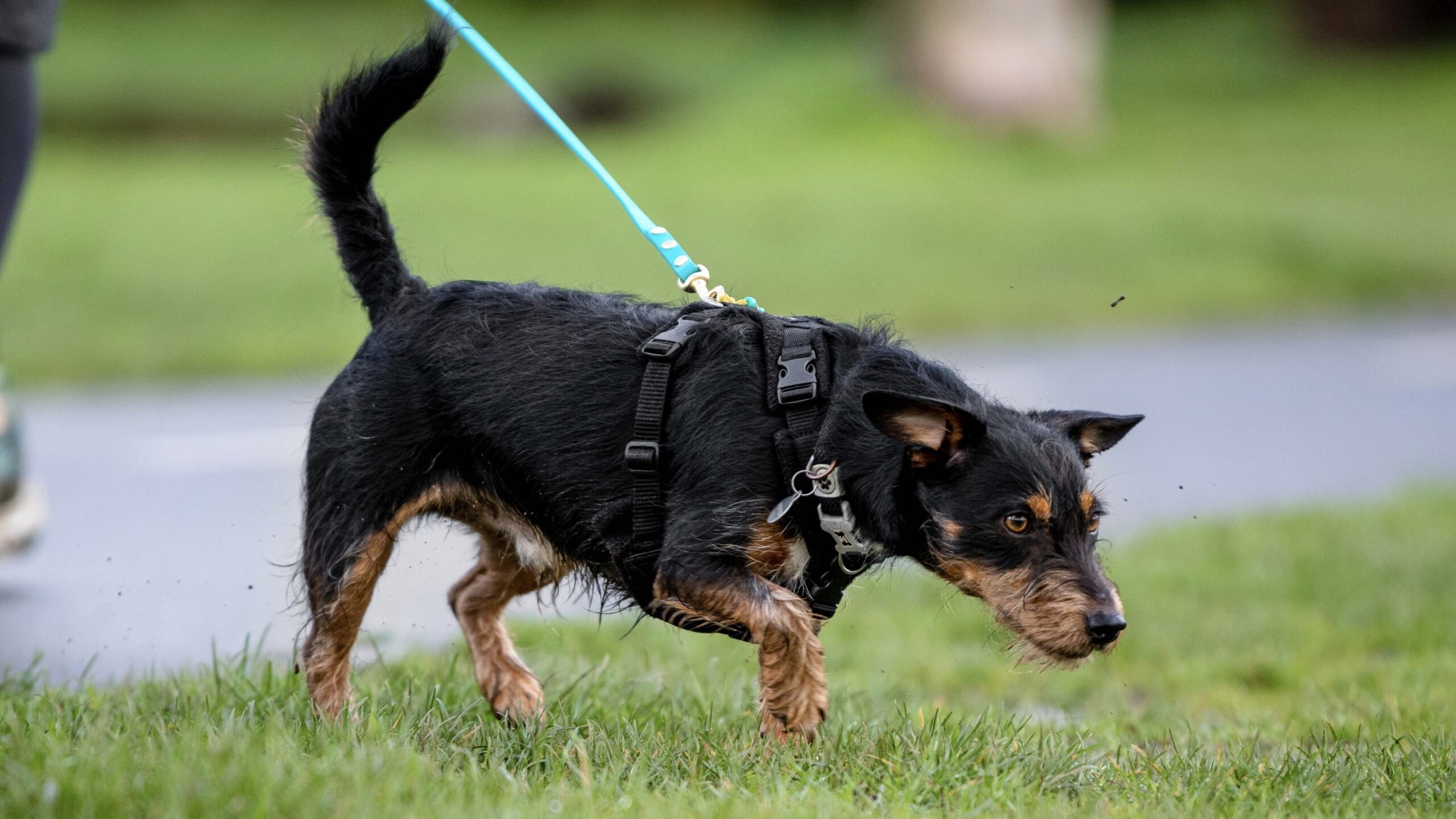
Understanding “Negative” Behaviour:
A “negative” doesn’t mean your dog is wrong on the trail or misbehaving. It simply indicates they’ve lost the trail or encountered a change in scent concentration.
I tend to call this decision behaviour rather than “negative” as you dog is deciding where the trail is.
Your dog might display a certain set of behaviours when they hit a “negative,” such as lifting their head or turning back. By learning your dog’s unique negative cues, you’ll be able to guide them back on trail when they lose it if they need the help.
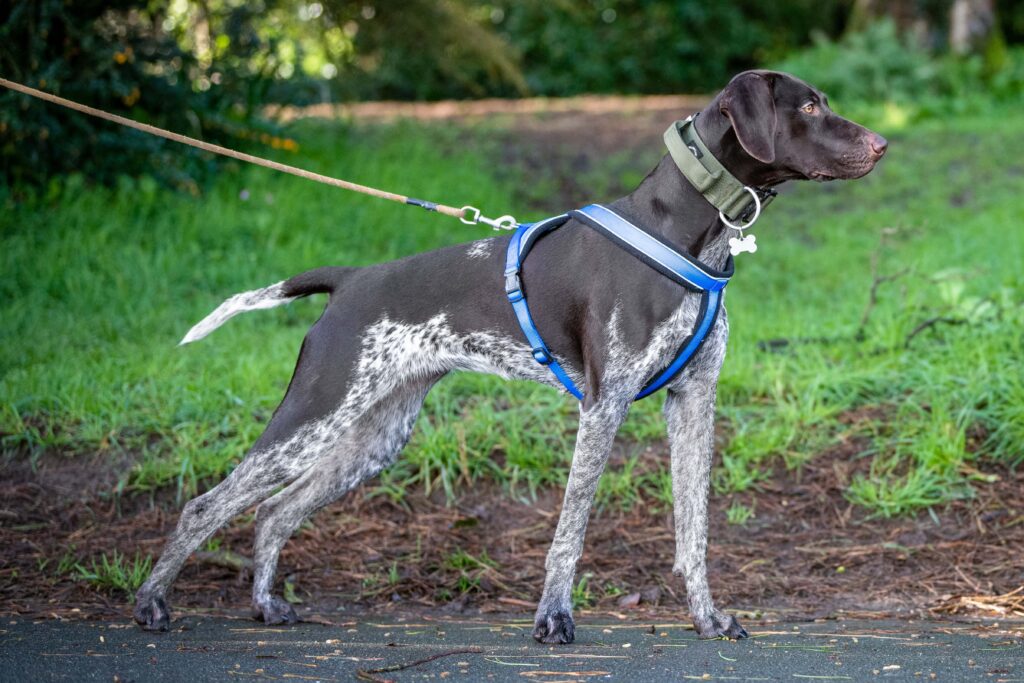
How Do I Know If My Dog Is Following Air Scent?
Air scenting occurs when your dog catches a scent that has moved with the wind, making it less concentrated than ground scent. Here’s how to spot it:
- Erratic Pulling and Zig-Zagging: Your dog may start pulling in different directions, nose in the air, trying to catch the drifting scent.
- Head Up and Nose in the Air: When your dog’s nose is elevated, they are often following scent in the air, not necessarily on the ground.
- Cutting Across the Trail: Your dog may jump sections of the trail as they follow airborne scent, often leading them off-course.
The Challenges of Air Scenting:
Air scenting can be tricky for both dogs and handlers. If your dog switches to air scent, they might go off the trail for a longer distance, making it difficult to recover the trail and get back on it if needed. Recovering the trail can be much harder in these situations because the scent is weaker and harder to pinpoint, they are following a decreased concentration of scent and can start to hunt for the trail.
How Can I Get My Dog to Be More Accurate When Mantrailing?
Building accuracy in mantrailing starts with understanding the difference between tracking and mantrailing:
- Tracking vs Mantrailing:
Tracking focuses on the scent on the ground, while mantrailing involves following a mixture of ground scent and air scent. Teaching your dog to stay focused on ground scent can help improve accuracy and reduce distractions. - The Power of Ground Disturbance:
Tracking helps your dog focus on ground disturbance, such as footprints, crushed vegetation, or soil changes. This type of scent is often easier to follow and understand, both for you and your dog, on any surface. - The Focus on Clear Scent:
By helping your dog understand the goal of the game through training, rather than trial and error can really help them be calmer and more accurate. Tracking allows us to break down the training into bite sized chunks and actually read our dogs behaviour on and off the trail.
Training for Accuracy:
By reinforcing ground scenting in training, you can help your dog become more consistent in their trail-following skills. If your dog starts following the trail on air scent leaving the trail a long distance behind, gently guide them back to the trail aiming for them to value using ground scent.
Following air scent with the mantrailing isn’t bad, we don’t want to stop the dog doing natural behaviour based on their learning and breed. But like any training we want to make things easier on the dog and handler by adding reinforcement in the correct place, and teaching the dog how to do something in a safe and calm way.
In the same way as we teach a sit at the side of the road for clarity to avoid them pulling under a car, we can guide our dogs to use ground scent more accurately and follow the trail more calmly for their safety.
But you do not also have to add tracking to your training plan, in the same way you do not need to teach your dog to sit at the side of the road. It is your choice.
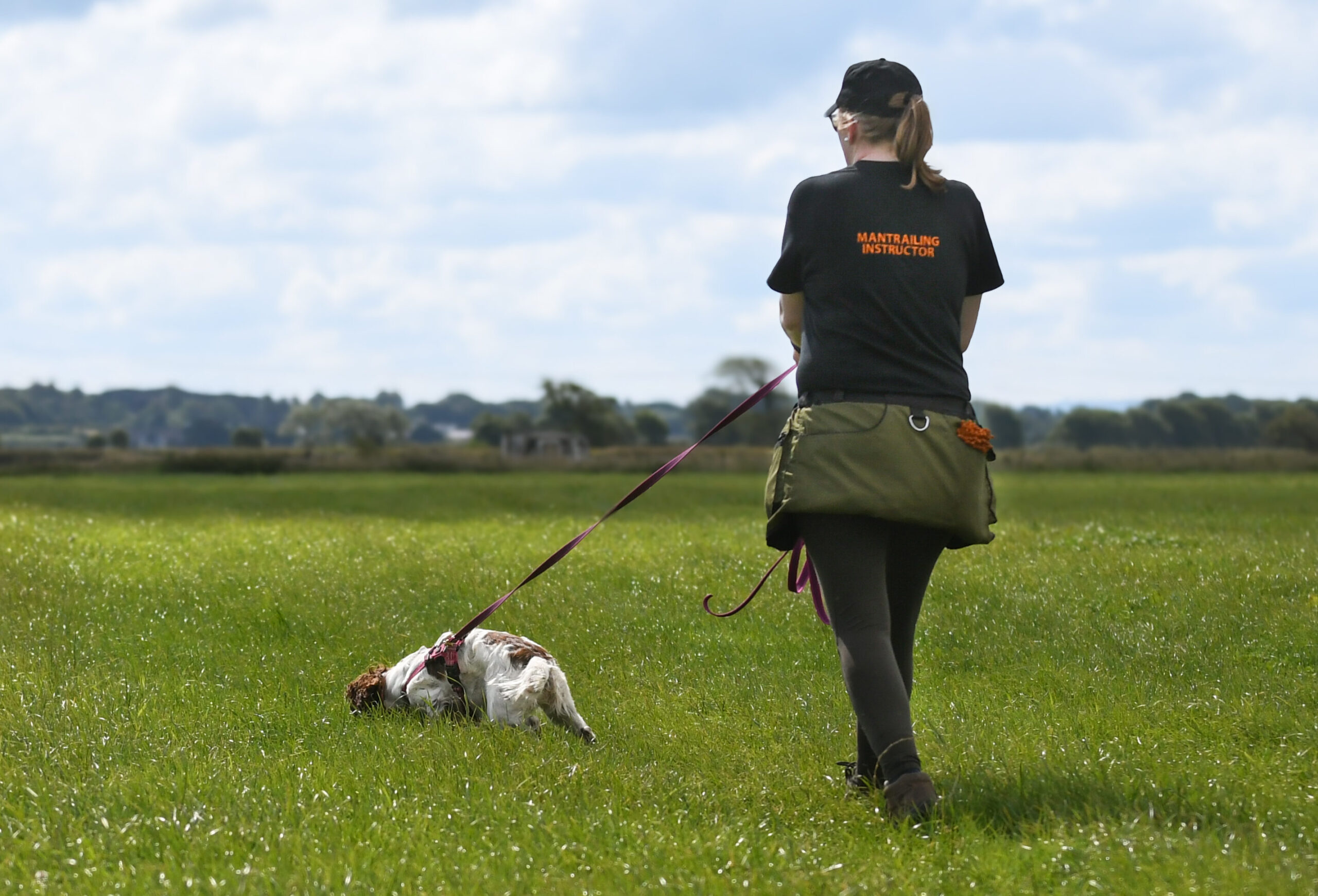
5 Tips to Help You Read Your Dog While Mantrailing
- Record Your Trails:
Record your trailing sessions to review your dog’s behaviour. Watching back can reveal small cues you may have missed in the moment. - Blueline Trailing or Known Trailing:
Work with known trails so you can observe your dog’s reactions and behaviour, without worrying about where the trail leads. - Set Up for Success:
Don’t set trails to test your dog when you’re still learning to read their body language. Set up situations where you can succeed together. - Focus on One Body Part at a Time:
Instead of trying to observe your dog’s whole body at once, focus on one part, like their head or tail, for a few trails to get a better understanding of how they’re working. - Understand Scent Movement:
Learn how scent moves through the environment, as this will help you interpret when your dog is on the trail or off track.
Terms got you in confused? Then check out the Trailing Terms Booklet
Understanding Dog Body Language During Mantrailing
Knowing how to read your dog’s body language is essential for effective mantrailing. Here are a few more key things to keep in mind:
- Reinforce Foundations:
Constantly revisit foundational skills like line handling to help you stay focused on your dog’s behaviour. - Log Your Behaviour:
Keep a log of your dog’s behaviour during each session. This will help you track patterns over time and adjust your approach accordingly. - Breed Traits:
Different dog breeds have different ways of handling scent. Understanding your dog’s breed can provide key insights into how they follow scent and how best to support them.
Conclusion
Reading your dog’s body language on the trail is a skill that takes time, practice, and patience. By understanding the subtle signs of behaviour like head carriage, tail position, and gait, you’ll be better equipped to guide your dog through the trail and become a more cohesive team. As you continue training, trust your dog’s instincts and their ability to problem-solve, and you’ll both find greater success in mantrailing together.
If you are wanting to geek out further on dog behaviour while mantrailing, and really learn to read your dogs behaviour on and off the trail then come join me on the mantrailing membership. It is jam packed with webinars, chats with industry experts and breakdowns of dog behaviour on the trail in real time. Designed to help the human half of the team thrive.

